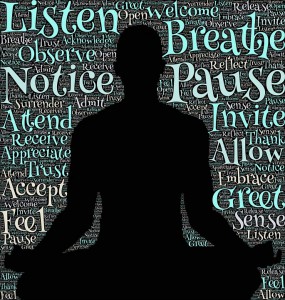This mental health awareness week, I want to share my experience of how teaching has been challenging to my wellbeing and what I have found useful in order to remain healthy in and out of my work.
Several years into w orking as a teacher, I began to experience a significant crisis of confidence over my ability to do the job. Almost overnight, I began to feel that I did not have the knowledge or skills to guide my pupils appropriately and that I was not the best, and therefore did not have the right to be in the position that I was when so many other fantastic musicians were struggling to find work. And whilst I knew that this feeling was all coming from me, from the thoughts I was having, and not through any constructive criticism or feedback, it still felt like I would ultimately have to leave a job which I had somehow always felt I would always fulfil.
orking as a teacher, I began to experience a significant crisis of confidence over my ability to do the job. Almost overnight, I began to feel that I did not have the knowledge or skills to guide my pupils appropriately and that I was not the best, and therefore did not have the right to be in the position that I was when so many other fantastic musicians were struggling to find work. And whilst I knew that this feeling was all coming from me, from the thoughts I was having, and not through any constructive criticism or feedback, it still felt like I would ultimately have to leave a job which I had somehow always felt I would always fulfil.
And this of course was coming on top of the ‘usual’ level of stress that goes with the territory. The pressure to keep pupils on track, especially leading up to an examination or performance, and the energy required to remain upbeat and positive through day after day of back to back lessons is not something I think that everyone is cut out to cope with.
Teaching one on one can also be a lonely business. The chance to discuss the challenges and highlights of the day is seldom there, whether you work privately at home or in a school or other organisation. The preparation and planning of lessons takes place alone and feedback from anyone other than your pupils themselves is rare.
I realise now that my crisis was fuelled mainly by the disease we call perfectionism. My desire to be the best at everything was still present from my years of studying as a singer and I was now transferring it to my teaching. I also failed to realise that teaching is just as much about personality and your ability to relate to a pupil as it is about your own musical ability, and that your own desire to continue to improve your musical skill is perhaps more important than your current level of expertise which is always much greater that that of your pupils.
Many years later, I’m now in a very different place mentally to where I was when I first started. I came through that difficult time by facing the fact that perfectionism is a damaging construct (and one which I explored in a previous post relating to performing here) and ultimately through my own strength to carry on whilst taking small steps in building my confidence in my abilities. I am now aware of how to mange my time and work load so that I don’t become overwhelmed – taking regular breaks and setting aside scheduled time to plan and deal with admin tasks is now something I wouldn’t sacrifice. I am also aware of the need to share ideas and experiences with colleagues and others in a similar position as often as possible and so try to become involved with events and discussions, even if only online rather than face to face.
In taking a wider perspective on my working life as a whole and making sure that I am always able see the bigger picture, I feel not only am I a stronger person both professionally and personally, but that my teaching has directly benefited greatly also.


